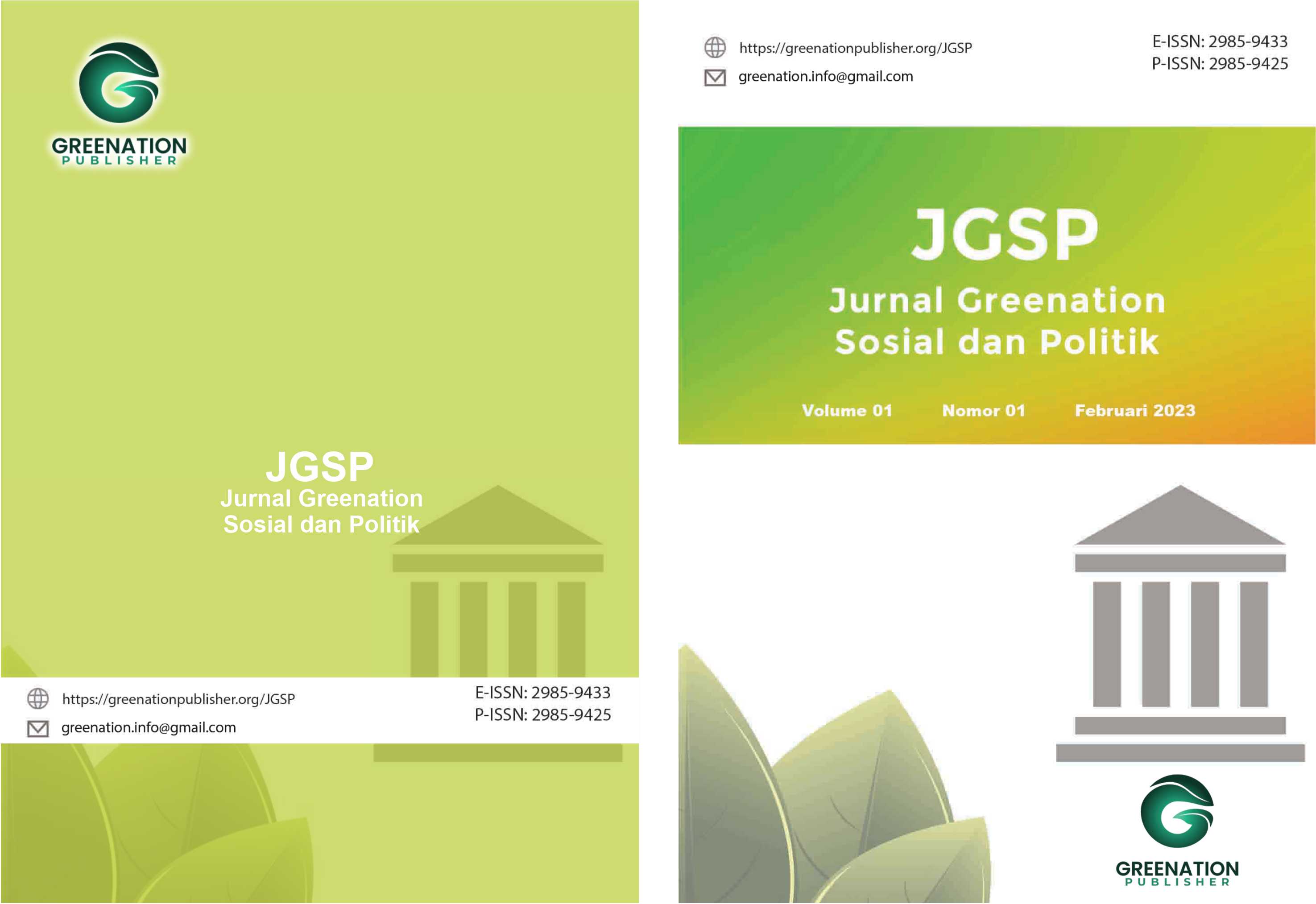Legal Vacuum Analysis and the Need for Criminal Policy Reformulation in Handling Cyberbullying Cases in Indonesia based on the Perspective of Child Protection and the Law on Electronic Information and Transactions
DOI:
https://doi.org/10.38035/jgsp.v3i3.437Keywords:
Cyberbullying, Children, Legal Vacuum, Electronic Information and Transactions Law (ITE Law), Child Protection, Criminal Policy ReformulationAbstract
The rapid development of digital technology has created a new space for internet-based crimes, one of which is cyberbullying targeting children as victims. This phenomenon continues to rise in Indonesia, in line with the high rate of social media usage among minors. Nevertheless, the existing legal system has not been sufficiently responsive in addressing cyberbullying specifically, especially when viewed from the perspective of child protection. The Law on Electronic Information and Transactions (Law No. 11 of 2008 in conjunction with Law No. 19 of 2016) does not explicitly regulate cyberbullying as a criminal offense, while the Child Protection Law (Law No. 23 of 2002 in conjunction with Law No. 35 of 2014 and Law No. 17 of 2016) also does not adequately cover digital-based violence. This normative and implementative gap creates difficulties in prosecuting perpetrators and risks neglecting the rights of children who are victims of cyberbullying. This paper analyzes the need for a reformulation of criminal policy through the establishment of specific norms that explicitly criminalize cyberbullying against children. The research uses a normative juridical approach and emphasizes the importance of integrating child protection into every criminal legal policy in the digital era. The proposed reformulation includes revising the norms in the ITE Law and the Child Protection Law, as well as strengthening the roles of law enforcement officers and digital platforms. The findings of this study highlight the urgency of criminal law reform that is not only repressive, but also preventive and rehabilitative for child victims.
References
Amalia, M. R. (2025). Kitab Undang Undang Hukum Pidana Tahun 2023. Jambi: PT. Sonpedia Publishing Indonesia.
Angraeni, N. B. (2024). Hukum Pidana: Teori Komprehensif. Jambi: PT. Sonpedia Publishing Indonesia.
Arliman, L. (2024). Teori Dan Konsep Perlindungan Anak Di Indonesia. Ensiklopedia of Journal, 6(3), 325-331.
Atikah, I. S. (2023). Yurisprudensi sebagai Upaya Koreksi terhadap Kekosongan dan Kelemahan Undang-Undang. YUDHISTIRA: Jurnal Yurisprudensi, Hukum dan Peradilan, 1(2), 61-69.
Fikri, A. M. (2023). Analisis Awal Terhadap Dinamika Penanggulangan Cyberbullying di Ruang Digital Indonesia Dalam Perspeftif Hukum Pidana. UNES Law Review, 6(1), 2306-2317.
Freska, N. W. (2023). Bullying dan kesehatan mental remaja. Bantul: CV. Mitra Edukasi Negeri.
Hafidz, J. (2021). Cyberbullying, Etika Bermedia Sosial, dan Pengaturan Hukumnya. Jurnal Cakrawala Informasi, 1(2), 15-32.
Harmiasih, S. K. (2023). Dampak Bullying terhadap Sosial Emosional Anak. JIIP-Jurnal Ilmiah Ilmu Pendidikan, 6(11), 8703-8708.
Hidayat, A. (2021). Kekerasan terhadap anak dan perempuan. AL-MURABBI: Jurnal Studi Kependidikan dan Keislaman, 8(1), 22-33.
Hutabarat, S. A. (2023). CYBER-LAW: Quo Vadis Regulasi UU ITE dalam Revolusi Industri 4.0 Menuju Era Society 5.0. Jambi: PT. Sonpedia Publishing Indonesia.
Isnawan, F. (2023). Tinjauan hukum pidana tentang fenomena cyberbullying yang dilakukan oleh remaja. Jurnal Interpretasi Hukum, 4(1), 145-163.
Jinner Sidauruk, S. H. (2024). PERLINDUNGAN HUKUM TERHADAP ANAK KORBAN CYBERBULLYING DI INDONESIA. JURNAL MASYARAKAT HUKUM PENDIDIKAN HARAPAN, 2(01).
Kumala, A. P. (2020). Dampak cyberbullying pada remaja. Alauddin Scientific Journal of Nursing, 1(1), 55-65.
Paat, L. N. (2020). Kajian Hukum Terhadap Cyber Bullying Berdasarkan Undang-Undang Nomor 19 Tahun 2016. Lex Crimen, 9(1), 13-23.
Saimima, I. D. (2020). Anak korban tindak pidana perundungan (cyberbullying) di media sosial. Jurnal Kajian Ilmiah, 20(2), 125-136.
Tan, K. (2022). Analisa Pasal Karet Undang-Undang Informasi Dan Transaksi Elektronik Terhadap Asas Kejelasan Rumusan. Jurnal Hukum Samudra Keadilan, 17(1), 14-29.
Ulfah, M. (2020). DIGITAL PARENTING: Bagaimana Orang Tua Melindungi Anak-anak dari Bahaya Digital? Tasikmalaya: Edu Publisher.
Wahidah, N. (2025). Fungsi Hukum Pidana. JUSTITIA: Journal of Justice, Law Studies, and Politic, 1(01), 8-16.
Wijaya, M. R. (2023). PERLINDUNGAN SUBJEK HUKUM DALAM PERKEMBANGAN TEKNOLOGI DITINJAU DARI PERSPEKTIF HUKUM DAN HAK ASASI MANUSIA. Marwah Hukum, 1(1), 21-28.
Zuanda, N. R. (2024). TREN PENELITIAN CYBERBULLYING DI INDONESIA. EDU RESEARCH, 5(1), 55-62.
Downloads
Published
How to Cite
Issue
Section
License
Copyright (c) 2025 Aji Yoga Sekar, Joko Setiono, Sutrisno Sutrisno

This work is licensed under a Creative Commons Attribution 4.0 International License.
Hak cipta :
Penulis yang mempublikasikan manuskripnya di jurnal ini menyetujui ketentuan berikut:
- Hak cipta pada setiap artikel adalah milik penulis.
- Penulis mengakui bahwa Jurnal Greenation Sosial dan Politik (JGSP) berhak menjadi yang pertama menerbitkan dengan lisensi Creative Commons Attribution 4.0 International (Attribution 4.0 International CC BY 4.0) .
- Penulis dapat mengirimkan artikel secara terpisah, mengatur distribusi non-eksklusif manuskrip yang telah diterbitkan dalam jurnal ini ke versi lain (misalnya, dikirim ke repositori institusi penulis, publikasi ke dalam buku, dll.), dengan mengakui bahwa manuskrip telah diterbitkan pertama kali di JGSP.
























